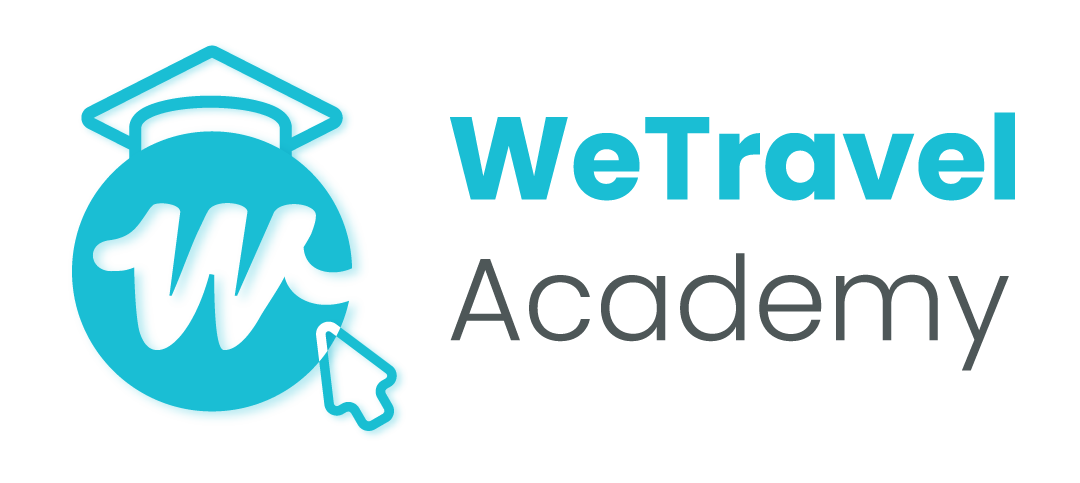According to a US Travel Trends report, one million travel-related hashtags are searched on a weekly basis. That’s a substantial potential audience to get in front of for your travel company!
Hashtags help you get more organic reach, which you need for getting more engagement and followers on social media. The great thing about running a tourism business is that there are so many excellent tourism hashtags to tap into to maximize this.
Travel and tourism are one of the most popular niches on social media. Your potential customers are searching on media every day for ideas and inspiration. With the right use of hashtags, you could be the first brand they see.
So, how do you find and use tourism hashtags correctly? We explain it all in our complete guide below.
What is a Hashtag Strategy?
Before just randomly inserting a few tourism hashtags, stop and consider what you’re doing. A hashtag strategy is necessary for your posts to get maximum reach - and the right kind of reach.
While inserting lots of hashtags into your content will help you reach more people, using the wrong hashtags could also have a negative effect. If you post the wrong type of content for your hashtags, nobody will engage with it. It will also make your brand look overly promotional, trying to seek engagement where it doesn’t make sense.
That is why it’s so important to have a solid hashtag strategy mapped out before you hit ‘post’.
A hashtag strategy is a plan of action for how you will use your hashtags and what kind of hashtags to use. Creating a hashtag strategy is all about finding the right tourism hashtags that are relevant to your business, and making sure you include the correct set of hashtags in each post.
Your overall hashtag strategy should include a very large set of hashtags to choose from. Typically, this should include broad hashtags that relate to your industry as a whole, and then more specific hashtags tailored for each specific post or content pillar that you publish on.
You could load up your post with 50 hashtags, and not see any increase in engagement. At the same time, you could use 20 highly-target and well-planned hashtags, and see a huge boost in engagement overnight.
Why is this?
Because you need to make sure that you use the right hashtags for what your audience wants to see, and what they are most likely to use. To understand this better, it’s important to know how hashtags work.

Gaining Travel Brand Visibility With Social Media Marketing and #Hashtags
Regardless of the type of tourism business you operate, one of your main marketing goals should be to increase brand awareness and improve the visibility of your company online. A social media strategy is essential for achieving this, and a key part of marketing on social platforms is using the right hashtags.
Hashtags can be used across various platforms - including Instagram, TikTok, Twitter, and Facebook. The whole aim of using hashtags is to increase your reach, get more impressions, and ultimately ramp up your social media engagement.
The tricky thing about travel social media is that it’s incredibly competitive. Even if you’re posting great content, it might not get any organic reach. Hashtags are an essential way to boost this reach because they put make your content visible for a wider range of search queries.
Look at your social media posts and analyze their performance. How many of your impressions came from the hashtags you used? Most likely a fair amount. Hashtags have been found to increase social media engagement by 12.6%.
Hashtags increase the visibility of your posts and your brand. They help you to connect with the right audience, get your target audience to discover you, and boost engagement on your posts. To make sure that your organic social media content is reaching the maximum number of people, you’ll need to use the right tourism hashtags.
How Do Tourism Hashtags Work?
To find the right tourism hashtags and use them effectively, you’ll first need to know how these hashtags work.
Basically, a user can search for a hashtag on social media - just like they would search for an account. The most popular and most recent hashtags posts using that hashtag will appear. Ideally, you’d want your post to be first, claiming the most popular spot.
You can only achieve this if you post high-quality content that’s relevant to the hashtag.
For example, you could use an incredibly popular hashtag like #travel. Sure, this could get you lots of impressions, but there are two main problems:
- The hashtag is incredibly broad, so users searching for #travel could be after all kinds of different content
- The hashtag is super popular, but it’s also super competitive. This means your post will quickly get buried underneath the competition if it doesn't attract enough engagement.
To combat this, you’ll want to create a hashtag strategy that is both broad and specific at the same time. Instead of only relying on tourism hashtags like #travel, refine it by using something like #birdingtours or #adventuretravel. The more specific you get, the easier it will be to post highly-relevant content to that hashtag.
And the more specific you are, the more likely you will be able to attract the right kind of users. Because it’s not just about getting a lot of engagement, it’s about getting engagement from the right people.

So, consider your target audience and what they will be searching for. This might be something like #ItalyFoodTours or #SurfLessonsCapeTown. Whatever the case, make sure that your business has a clear presence for the right hashtags.
Of course, hashtags work slightly differently on each social media channel. Users search for trending hashtags on TikTok, which are often challenges or some take on trending audio content. On Instagram, hashtags are more straightforward, creating a kind of gallery of content on specific topics.
What Types Of Hashtags Should You Use?
The most important part of your tourism hashtag strategy is finding the right tags to use. As we’ve already mentioned, this should include both high-level hashtags (like #travel) and more specific hashtags (like #birdingtours).
The high-level hashtags will help you maximize your impressions. This will get the most people possible to see your post and potentially interact with your content. If you just want to get more likes, then using these popular hashtags will help.
More targeted hashtags will help you grow a more authentic audience. If you want to use social media to attract potential customers, then you’ll need to be specific about your hashtags.
Using both hashtags together will help you achieve both things at the same time.
How To Find Travel Hashtags?
There are a few different ways that you can approach hashtags to find the right ones for your brand.
Start by analyzing your competitors. Search for your main competition (preferably a business that has excellent social media engagement and a lot of followers), and look at what hashtags they are using. If these hashtags also apply to you, then take note.

Next, simply search for the kind of hashtags you think would work. Type keywords that describe your business into the search bar, and look for recommended hashtags. You could use destinations you cover, activities that you offer (bicycle tours, cruises, history walks), what kind of travelers you want to attract (adventure, slow travel, wellness), and so on. Try to make as big of a list as possible.
Using Your Tourism Hashtags
When you find relevant tourism hashtags, create a spreadsheet and divide based on pillars.
For example, you could have a broad hashtag pillar (#travel, #yoga, #holiday), and then specific hashtags under each type of content or travel option that you offer. For example, if you offer hiking tours and cycling tours, have a set of hashtags for each pillar.
Then, when you post something on social media, simply go to your pillar and copy-paste your hashtags. Be sure to include a few relevant broad hashtags too.
Measuring the Impact Of Your Marketing Efforts
To make sure you’re using tourism hashtags for marketing your business correctly, you’ll need to measure the impact these hashtags actually have.
Use your social media channel’s insights/analytics dashboard to measure the impressions and engagement of your posts.
If you see a big increase in impressions but little increase in engagement, then you’ll want to refine your hashtags more to make them more relevant. Ideally, you want increased impressions and engagement that matches this.
If your posts aren’t getting more engagement from your hashtags, then it’s time to change up the hashtags you’re using.
Continue testing this until you get it right.
Conclusion
Travel marketing is highly competitive, That is why it’s so important that you have a comprehensive strategy to maximize your brand awareness. Tourism hashtags form a necessary part of this.
Quite simply, hashtags will help you get more reach in terms of your audience, gain more visibility, and more engagement overall. If you’re struggling to make enough of an impact on social media, follow our guide above to increase your following.
New resources, straight to your inbox
We’re committed to your privacy. WeTravel uses the information you provide to us to contact you about our relevant content, products, and services. You may unsubscribe at any time.





